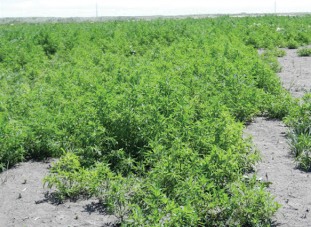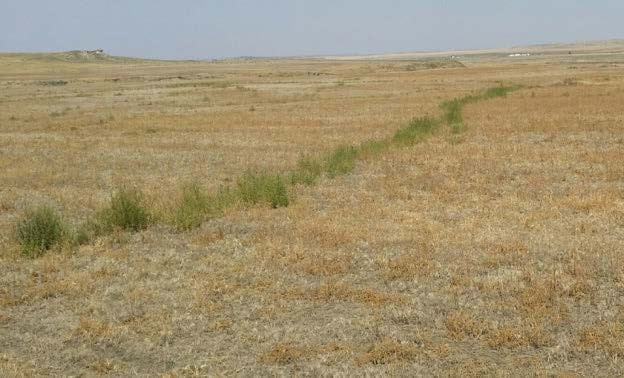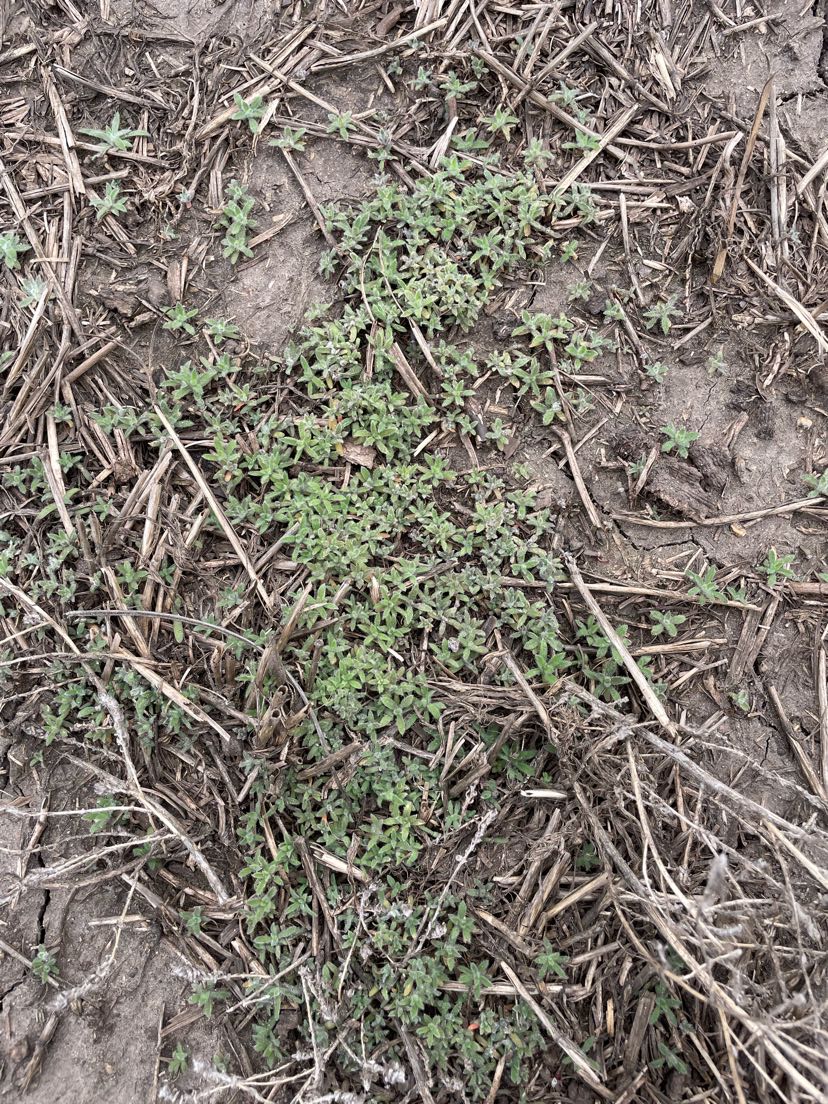Kochia: How to Crush the Superweed

Kochia. Does it need any further introduction? The bane of many western farmers’ existence, kochia is an opportunistic weed, sprouting up wherever a tumbleweed may blow. A ‘pioneer’ plant, kochia thrives in saline or alkaline spots, making the most out of the ground your crops won’t grow in. Yield robbing and excellent at plugging the combine, kochia continues to be a challenge to fields across the region.

Mature kochia spreads easily as tumbleweeds, leaving a telltale trail of new plants the next spring.
Kochia can emerge in the spring in as little as 50 GDD and from depths of over 3 inches. In dry years, it has been documented to reach rooting depths of 16 feet! It also has a C4 photosynthetic pathway (like corn) and a seed:plant biomass ratio of over 3x that of common lambsquarters. Kochia isn’t just a weed, it’s a superweed!
Coming off a dry year where pre-emergence herbicides had limited to no activation, kochia is sure to be a big problem this season. No matter what your rotation or your crop, we’ve got some tips to crush kochia this year.
Starting Strong
The key to any weed management plan is a strong start. If you can, getting into the field with a spring burndown mix plus a residual is the best way to start. Weeds are emerging far before you can get a planter in the field, so managing your first spring flush is important. Good pre-emergence control not only reduces the initial population, but residuals will continue to protect yields. When those residual periods are over, weeds that are present will be smaller and easier to control in post-emergence applications.
For pre-emergent, soil-applied kochia control in soybeans, look for mixes with the active ingredient sulfentrazone (Spartan). For additional burndown, carfentrazone (Aim), plus an MSO adjuvant, will give an extra kick to help in controlling those small weeds that are already out of the ground.
In corn, atrazine is a very powerful and cost-effective choice for both pre- and post-applications (up to 12”), but it has virtually no foliar activity, so you’ll need a tank-mix partner to take down emerged plants.
Post Options
In beans, you have a few options depending on your trait package.
In kochia country, Xtend and XtendFlex trait packages are popular for dicamba use. This is fine, but with dicamba resistance emerging in kochia, it is important to use full rates and follow label directions. Cutting rates to save a buck makes resistance issues worse and hurts you down the road. In XtendFlex, dicamba can be applied early on or with your pre, followed by a Liberty or generic glufosinate later in the season. Leading with dicamba and following with Liberty helps widen your application window and avoid the June 30th dicamba deadline.
Enlist systems are trickier, but a good pre will set you ahead. Liberty is very effective on kochia when used correctly. When using Liberty, you’ll need to catch the weeds small (less than 3”). Liberty is a contact product requiring good coverage and AMS to take out kochia. Another tool in the Enlist package, 2,4-D is rated as poor for kochia control in the NDSU Weed Control Guide, plus there are large areas where 2,4-D resistant kochia has emerged, so apply with caution.
Corn has several very effective post options available. Dicamba (up to 8”) is very effective and so are products containing mesotrione (Callisto) or tembotrione (Laudis), which also offer a layer of residual. Knowing your area and being familiar with resistances will be important. Contact your local extension for information on herbicide resistance in your area, and always be on the lookout for plant escapes.

Kochia patches emerge from anywhere tumbleweeds traveled or become lodged. Catching seedlings at early stages is important for effective control.
Be sure to mix your chemistries and apply multiple modes of action when possible to prevent resistance. Do not skimp on rate. With contact herbicides, increasing carrier volume (water) helps get good coverage and prevent escapes. Part of what makes kochia so difficult to manage is its resistance to herbicides. Biotypes resistant to groups 2, 4, 5 and 9 have been identified in ND, with group 14 PPO-inhibitors being added recently. Utilizing a full rate and ensuring good contact helps combat resistance. Don’t forget your adjuvants, especially when weeds get ahead and are larger at the time of spraying.
Kochia can be managed when done correctly. Our biggest advantage in the battle with kochia is the limited seed viability. As little as 5% of carryover seed will germinate. What does that mean for us? If we can control plants before they flower and prevent new seed getting added to the seed bank, it is possible for us to eliminate kochia patches entirely in a few years.
For more information, check out the North Dakota Weed Control Guide, where kochia is featured as 2022’s Weed of the Year.



